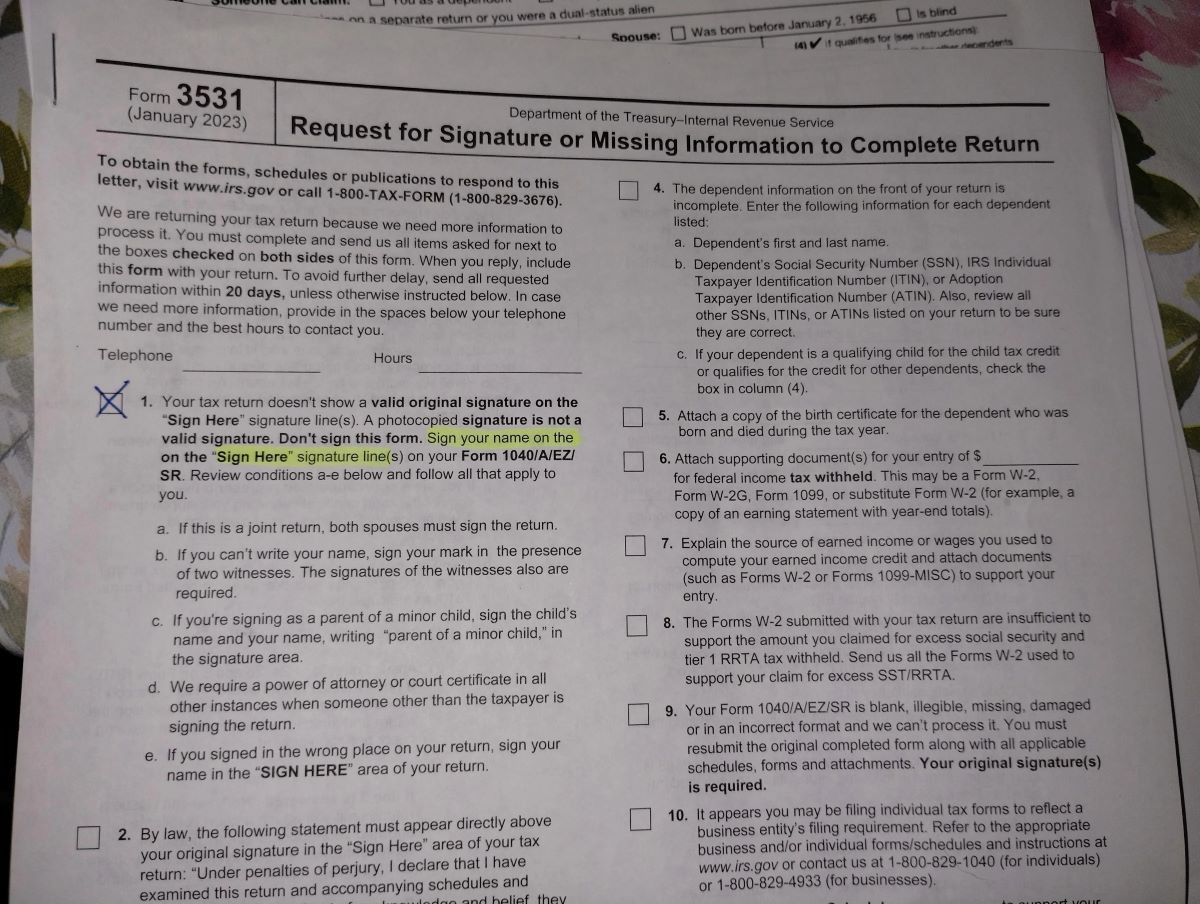

Finance
How Do Student Loans Interest Work
Published: January 19, 2024
Learn how student loans interest works and how it affects your finances. Gain insights into managing your loans and making smart financial decisions.
(Many of the links in this article redirect to a specific reviewed product. Your purchase of these products through affiliate links helps to generate commission for LiveWell, at no extra cost. Learn more)
Table of Contents
- Introduction
- What Are Student Loans?
- How Student Loan Interest Works
- Types of Student Loan Interest
- Fixed Interest Rates
- Variable Interest Rates
- How Student Loan Payments Affect Interest
- Understanding Amortization
- How Student Loan Interest is Calculated
- Capitalization of Interest
- How to Minimize Interest on Student Loans
- Conclusion
Introduction
Student loans have become a necessary component for many individuals pursuing higher education. They provide financial assistance to cover tuition fees, books, and living expenses during college or university. While student loans can make education more accessible, it’s important to understand how they work to effectively manage your finances.
One crucial aspect of student loans is the concept of interest. Understanding how student loan interest works is key to making informed decisions and minimizing debt. In this article, we’ll explore the ins and outs of student loan interest and how it can impact your repayment journey.
Whether you are a current student, a recent graduate, or planning to embark on higher education in the future, gaining a solid understanding of student loan interest will empower you to make informed financial decisions.
We’ll delve into the different types of student loan interest, including fixed and variable rates, and explain how student loan payments affect interest. We’ll also explore the concept of amortization, how student loan interest is calculated, and highlight strategies to minimize the amount of interest you pay over the life of your student loans.
So, let’s dive in and unravel the intricacies of student loan interest, equipping you with the knowledge you need to manage your student loans effectively.
What Are Student Loans?
Student loans are financial instruments specifically designed to help students cover the costs of higher education. They are typically provided by government entities or private financial institutions and are available to both undergraduate and graduate students.
Obtaining a higher education often comes with significant costs, such as tuition fees, textbooks, housing, and other living expenses. These expenses can be difficult to afford out of pocket, which is where student loans come into play.
When you take out a student loan, you are essentially borrowing money to fund your education, with the expectation that you will repay the loan, along with interest, over a specified period of time. The loan amount will vary based on factors such as the cost of attendance at your chosen educational institution, your financial need, and the type of loan you are eligible for.
It’s important to note that student loans differ from other types of loans in several ways. Firstly, they typically have lower interest rates compared to other types of loans, making them more manageable for students. Additionally, student loans often offer flexible repayment options, allowing borrowers to defer payments while still in school or during periods of financial hardship.
Student loans can be classified as either federal or private. Federal student loans are offered by the government and generally have more favorable terms and conditions. These loans often do not require a credit check and offer the opportunity for loan forgiveness or repayment plans tied to income. Private student loans, on the other hand, are provided by private lenders such as banks or credit unions. These loans typically require a credit check and may have higher interest rates.
Student loans play a significant role in enabling individuals from diverse backgrounds to pursue higher education. They allow students to focus on their studies without the immediate burden of paying for educational expenses up front.
Now that we understand the basics of student loans, let’s explore how student loan interest works and its implications on your repayment journey.
How Student Loan Interest Works
Student loan interest is the additional cost charged on top of the original loan amount. It is essentially the fee you pay to the lender for borrowing the money. Understanding how student loan interest works is crucial for effectively managing your loan repayment.
When you take out a student loan, interest begins accruing immediately, even if you’re still in school or in a grace period before repayment. This means that the longer it takes you to repay the loan, the more interest will accumulate.
The interest on your student loan is calculated based on the interest rate and the principal balance. The interest rate is usually expressed as an annual percentage and can be either fixed or variable.
Fixed Interest Rates: A fixed interest rate remains the same for the entire duration of the loan. This means that the interest rates and monthly payments are fixed and predictable. It provides stability as you know exactly how much interest you’ll be paying throughout the repayment term.
Variable Interest Rates: A variable interest rate is subject to change over time, based on fluctuations in the market. With a variable rate, your interest rate can increase or decrease, resulting in varying monthly payments. While a variable rate may start lower than a fixed rate, it can pose more uncertainty as your payments may increase if the interest rate rises.
The frequency at which interest is added to your loan is determined by the terms of your loan agreement. Commonly, interest is calculated daily, but it may also be calculated monthly or annually. The more frequently interest is compounded, the more it will impact the total amount you owe.
It’s important to note that the interest you accumulate during your time in school or during a grace period may be capitalized, meaning it will be added to the principal balance of your loan. This can result in higher overall loan costs.
Understanding how student loan payments affect interest is crucial for managing your loans effectively. When you make a payment, it generally goes towards first covering any outstanding interest and fees before reducing the principal balance.
By making larger or more frequent payments, you can reduce the amount of interest that accrues over time and potentially shorten the overall loan term. This can lead to significant savings in the long run.
In the next section, we’ll delve deeper into how student loan interest is calculated and explore the concept of amortization.
Types of Student Loan Interest
When it comes to student loans, there are two primary types of interest: fixed interest rates and variable interest rates. Understanding the differences between these two types can help you make an informed decision when choosing a loan.
Fixed Interest Rates:
A fixed interest rate remains constant throughout the life of the loan. This means that the interest rate you agree upon at the beginning of your loan term will stay the same, regardless of any changes in the market or economy. Fixed interest rates offer stability and predictability, as your monthly payments will also remain consistent. This can be advantageous when planning your budget and managing your finances. It provides peace of mind, knowing that you won’t be surprised by unexpected increases in interest rates and payments.
Variable Interest Rates:
Unlike fixed interest rates, variable interest rates can change over time. They are often tied to an index or benchmark, such as the prime rate or the London Interbank Offered Rate (LIBOR). Variable interest rates are influenced by market conditions and can fluctuate periodically, potentially leading to changes in your monthly payments. If the index or benchmark rate increases, your interest rate and payments may also increase. On the other hand, if the index rate decreases, your interest rate and payments may decrease as well. Variable interest rates can be lower initially compared to fixed rates; however, the risk lies in the potential for higher rates in the future.
Deciding between fixed and variable interest rates depends on various factors, including your risk tolerance, financial situation, and outlook on interest rate trends. If you prefer stability and are comfortable with a consistent payment amount, a fixed interest rate might be the better option. Alternatively, if you are open to potential fluctuations in rates and believe that interest rates will decrease or remain stable in the future, then a variable interest rate may be more attractive.
It’s important to carefully consider your options and consult with a financial advisor or loan provider to determine which type of interest rate aligns best with your financial goals and circumstances.
Now that we understand the different types of student loan interest, let’s delve into how student loan payments affect interest and the concept of amortization.
Fixed Interest Rates
A fixed interest rate is a type of student loan interest rate that remains constant throughout the entire repayment term. This means that the interest rate you agree upon when taking out the loan will remain unchanged, regardless of market fluctuations or economic conditions.
One of the main advantages of a fixed interest rate is the predictability it offers. With a fixed rate, you can accurately calculate your monthly payments and plan your budget accordingly. Unlike variable interest rates, which can fluctuate, potentially causing payment amounts to increase or decrease, a fixed interest rate provides stability and peace of mind.
By knowing exactly how much you need to pay each month, it becomes easier to manage your finances and ensure that you are meeting your repayment obligations. You won’t be caught off guard by unexpected interest rate increases that could lead to higher monthly payments.
Additionally, fixed interest rates make it easier to compare loan offers from different lenders. Since the interest rate remains the same, you can focus on other factors, such as repayment terms, loan fees, and customer service when evaluating loan options. This helps simplify the decision-making process and ensures that you are selecting the loan that best suits your needs.
However, it’s important to note that fixed interest rates may initially be slightly higher than variable rates. Lenders factor in the potential risk that interest rates could increase in the future when setting fixed rates. Therefore, borrowers may have to pay a premium for the stability and predictability that fixed rates offer.
While fixed interest rates provide stability over the long term, keep in mind that refinancing or consolidating student loans with a fixed rate may not be an option to take advantage of potential decreases in interest rates. Once you have committed to a fixed interest rate loan, you are locked in at that rate until the loan is fully repaid or refinanced into a different loan.
When considering fixed interest rates, it is crucial to evaluate your personal financial situation, risk tolerance, and future interest rate trends. Consulting with a financial advisor or loan provider can help you make an informed decision.
Now that we have explored fixed interest rates, let’s move on to understanding variable interest rates and how they differ from fixed rates.
Variable Interest Rates
A variable interest rate is a type of student loan interest rate that can fluctuate over time. Unlike fixed interest rates, which remain constant throughout the loan term, variable interest rates are tied to an index or benchmark rate, such as the prime rate or the London Interbank Offered Rate (LIBOR).
Variable interest rates are influenced by changes in the market and economic conditions. If the index or benchmark rate goes up, the interest rate on your loan will increase, resulting in higher monthly payments. Conversely, if the index rate goes down, your interest rate and monthly payments will decrease.
One of the main advantages of variable interest rates is the potential for lower initial rates compared to fixed rates. When interest rates are low, borrowers can benefit from starting with a lower rate, potentially saving money on interest payments in the early part of the loan term.
Variable interest rates also provide flexibility. Since they can go up or down, borrowers may have the opportunity to pay less interest overall if rates decrease over time. However, it is important to note that there is also the risk of rates increasing, which could lead to higher monthly payments and more interest paid over the life of the loan.
When considering a variable interest rate, it is essential to evaluate your risk tolerance and financial situation. If you believe that interest rates will remain low or decrease in the future, a variable rate may be an attractive option. On the other hand, if you prefer stability and want to have a more predictable repayment journey, a fixed interest rate may be a better choice.
Variable interest rates are often associated with loans that have shorter repayment terms. This can be advantageous since the potential for rate fluctuations is reduced over a shorter period. However, it’s important to assess your ability to handle potential increases in monthly payments if rates do rise.
Keep in mind that when considering loan options, it is crucial to carefully review and understand the terms and conditions of the loan agreement. Pay attention to factors such as interest rate caps, which limit how much the interest rate can increase or decrease during a specific period, as well as any potential fees or penalties associated with rate changes.
Before deciding on a variable interest rate, it is advisable to consult with a financial advisor or loan provider to ensure that you fully understand the risks and benefits. They can help you assess your individual financial situation and guide you towards the loan option that aligns with your goals and preferences.
Now that we have covered variable interest rates, we will explore how student loan payments affect interest in the next section.
How Student Loan Payments Affect Interest
Understanding how student loan payments affect interest is crucial in managing your loan effectively and minimizing the total amount of interest paid over time. When you make a payment towards your student loan, it typically goes towards three components: outstanding interest, fees (if applicable), and the principal balance.
Interest is the additional cost charged on the loan amount, and it accrues daily, monthly, or annually depending on the terms of your loan agreement. When you make a payment, the first portion usually goes towards paying off any accrued interest that has not been satisfied previously. This is known as “satisfying the interest.”
Once the outstanding interest is paid, any remaining amount goes towards reducing the principal balance. The principal is the original amount borrowed, excluding interest and fees. By reducing the principal balance, you can effectively decrease the amount of interest that will accrue moving forward.
It’s important to note that if you make a payment that is less than the accrued interest, the remaining interest will be added to the principal balance, leading to the capitalization of interest. Capitalization increases the total amount owed and can result in higher overall loan costs.
On the other hand, if you make extra payments above the minimum required, that additional amount will be applied directly to the principal balance. By doing so, you can reduce the overall interest that accumulates over the life of the loan.
Effectively managing the payments on your student loans can save you money in the long run. Making on-time payments and paying more than the minimum required can significantly reduce the amount of interest you have to pay and shorten the repayment term. It’s important to communicate with your student loan servicer to ensure that your payments are being applied correctly and to explore any available options for prepayment or accelerated payment plans.
Additionally, setting up automatic payments or enrolling in autopay programs offered by loan servicers can be beneficial. These programs often provide incentives such as interest rate reductions or fee waivers, helping to further minimize the total cost of your loan.
Being proactive and managing your loan payments effectively can have a significant impact on your overall financial well-being. By paying attention to interest and principal balances, you can reduce the burden of student loan debt and accelerate your journey to financial freedom.
In the next section, we will explore the concept of amortization and how it relates to student loan interest.
Understanding Amortization
Amortization is a term commonly used in the context of loans, including student loans. It refers to the process of gradually paying off the principal balance of a loan through regular, scheduled payments over a specified period of time.
When you take out a student loan, the repayment term is typically divided into equal installments, usually monthly payments, over the life of the loan. These installment payments are designed in a way that allows you to gradually pay down both the principal balance and the accumulated interest.
At the beginning of your loan term, a larger portion of your monthly payment goes toward paying off the interest, while a smaller portion goes toward reducing the principal balance. This is because the interest is calculated based on the outstanding principal balance, and as you make payments and reduce the principal, the interest amount also decreases.
Therefore, as you progress through the loan term, the balance between the amount applied to interest and the amount applied to principal gradually shifts. Over time, a larger portion of your monthly payment is allocated towards the principal, accelerating the reduction of your overall loan balance.
The process of amortization ensures that by the end of the loan term, you will have fully paid off both the principal amount borrowed and any accrued interest. By making consistent payments according to the repayment schedule, you are effectively chipping away at your loan balance and gradually becoming debt-free.
It’s important to note that the total interest paid over the life of the loan depends on several factors, including the interest rate, the loan amount, and the length of the repayment term. By making extra payments or paying more than the required minimum, you can further reduce the total interest paid and shorten the repayment period.
Understanding amortization enables you to have a clear picture of how your loan payments are allocated towards interest and principal. It allows you to track your progress, anticipate the time it will take to repay your loan in full, and identify opportunities for debt repayment strategies.
Now that we have explored amortization, let’s dive into how student loan interest is calculated and the factors that impact the total amount you owe.
How Student Loan Interest is Calculated
Understanding how student loan interest is calculated is essential for managing your loan effectively. The calculations depend on several factors, including the interest rate, the outstanding principal balance, and the frequency at which interest is compounded.
The interest rate on your student loan is typically expressed as an annual percentage. It represents the cost of borrowing the money and is applied to the outstanding balance of your loan.
To calculate the daily interest rate, divide the annual interest rate by 365 (the number of days in a year). For example, if your loan has an interest rate of 6%, the daily interest rate would be 0.0164%.
The next factor is the outstanding principal balance of your loan. This is the amount of money you initially borrowed, excluding any interest or fees that have been added. As you make payments, the principal balance decreases.
The frequency at which interest is compounded can vary depending on the terms of your loan. Commonly, it is calculated daily, but it may also be calculated monthly or annually. The more frequently interest is compounded, the more it will impact the total amount you owe.
To calculate the interest accrued for a specific period, multiply the outstanding principal balance by the daily interest rate and by the number of days in that period. For example, if you have a principal balance of $10,000 and a daily interest rate of 0.0164%, the daily interest accruing would be $1.64. Over a 30-day period, the interest accrued would be $49.20.
It’s important to note that if you have a variable interest rate, the calculations may be more complex as the rate can change over time based on market conditions. In such cases, the interest rate adjustments will affect the calculations for future interest payments.
Additionally, if you have a grace period or are in deferment, where you are not required to make payments, interest may still accrue. This accrued interest may be added to the principal balance of the loan, leading to higher overall loan costs.
Understanding how student loan interest is calculated allows you to anticipate the amount of interest that will accrue over time and make informed decisions regarding your repayment strategy. By paying attention to the interest calculations and taking actions to minimize interest, such as making larger payments or considering refinancing options, you can reduce the overall amount you owe and shorten the repayment term.
Next, let’s explore the concept of capitalization and its impact on your student loan interest.
Capitalization of Interest
Capitalization of interest is an important concept to understand when managing your student loans. It occurs when the unpaid interest on your loan is added to the principal balance. As a result, interest starts accruing on the new, higher balance, which can increase the total amount you owe over time.
The most common scenario for capitalization is during periods of forbearance, deferment, or when the grace period ends. During these times, although you might not be making payments, interest can still accumulate on your loan. At the end of the grace period or deferment period, any accrued interest is added to the principal balance, and this becomes the new starting point for interest calculations.
Capitalization of interest can have a significant impact on the overall cost of your loan. Not only will the loan balance increase, but the interest that accrues going forward will be calculated based on the higher balance. This means that you will end up paying more interest over the life of the loan.
To minimize the impact of capitalization, it’s important to understand your options and take proactive steps. Here are a few strategies you can consider:
- Make interest payments: Even if you’re not required to make payments, consider paying at least the accrued interest during periods of deferment or forbearance. By doing so, you can prevent the interest from being capitalized, reducing the overall amount you owe.
- Make payments during your grace period: If you have the financial means to do so, consider making payments during the grace period before repayment begins. By making payments early, you can reduce the principal balance before interest starts accruing, minimizing the potential impact of capitalization.
- Consider an interest subsidy: Some loan programs or repayment plans may offer an interest subsidy, where the government or loan provider covers the interest that accrues during specific periods. This can help prevent the capitalization of interest, saving you money in the long run.
- Refinance or consolidate: If you have multiple loans with varying interest rates, consider refinancing or consolidating them into a single loan. This can help streamline your payments and prevent multiple instances of interest capitalization.
Understanding the concept of interest capitalization and taking proactive measures to minimize its impact can help you save money and manage your student loans more effectively. By staying informed and exploring your options, you can make the best decisions for your financial situation.
Now, let’s explore strategies to minimize interest on your student loans.
How to Minimize Interest on Student Loans
Minimizing the amount of interest you pay on your student loans can save you money and help you become debt-free faster. Here are several strategies to consider:
- Make payments while in school: If possible, start making payments towards your student loans while you are still in school or during the grace period. By doing so, you can reduce the outstanding principal balance before interest begins to accrue, ultimately lowering the total amount of interest you will pay over the life of the loan.
- Pay more than the minimum: Making extra payments or paying more than the minimum required can have a significant impact on the amount of interest you accrue. By paying down the principal balance faster, you reduce the total amount of interest that will accumulate over time.
- Consider refinancing: Refinancing your student loans can be a smart strategy to lower your interest rate and potentially save money on interest. Shop around and compare rates from different lenders to find the best option that suits your financial situation. Keep in mind that refinancing may not be the best choice for everyone, so evaluate the terms and conditions carefully before making a decision.
- Stay on top of payments: Making your payments on time is crucial for minimizing interest. Late payments can result in additional fees and can even cause your interest rate to increase. Setting up automatic payments or reminders can help ensure that you never miss a payment.
- Consider bi-weekly payments: Instead of making monthly payments, divide your monthly payment in half and make payments every two weeks. This strategy allows you to make an extra payment each year, which can help reduce the principal balance and save on overall interest.
- Explore loan forgiveness programs: Depending on your career path, you may be eligible for loan forgiveness programs. These programs forgive a portion or the entirety of your student loan debt after you meet certain criteria, such as working in a specific field or for a qualifying employer. Research and see if you qualify for any government or employer-sponsored forgiveness programs.
Remember, every little bit counts when it comes to minimizing interest on your student loans. By implementing these strategies and staying proactive, you can significantly reduce the cost of your loans and achieve financial freedom sooner.
Now that we have explored ways to minimize interest, let’s conclude our discussion on student loan interest and its impact on your overall finances.
Conclusion
Understanding how student loan interest works is crucial for effectively managing your loans and minimizing the overall cost of your education. Student loans provide financial assistance for higher education but come with the additional burden of interest.
In this article, we explored the different types of student loan interest, including fixed and variable rates. Fixed interest rates offer stability and predictability, while variable interest rates can fluctuate based on market conditions. Choosing the right type of interest rate depends on your risk tolerance and financial goals.
We also discussed how student loan payments affect interest, emphasizing the importance of paying more than the minimum required to reduce the principal balance and decrease the amount of interest that accrues over time.
Amortization, the gradual repayment of the loan through regular installments, plays a vital role in student loan repayment. It allows you to chip away at the principal balance and become debt-free over time.
Additionally, we explored how student loan interest is calculated based on the interest rate, principal balance, and frequency of compounding. Capitalization of interest, where unpaid interest is added to the principal balance, can increase the total amount owed and should be minimized whenever possible.
We provided strategies to minimize interest on student loans, such as making payments while in school, paying more than the minimum, considering refinancing options, staying on top of payments, and exploring loan forgiveness programs.
By implementing these strategies, you can effectively manage your student loans, reduce the overall cost of your education, and work towards financial freedom.
Remember, it’s essential to stay informed, communicate with your loan servicer, and explore all available options when it comes to managing your student loans. With smart financial decisions and a proactive approach, you can successfully navigate your student loan repayment journey and achieve your long-term goals.














